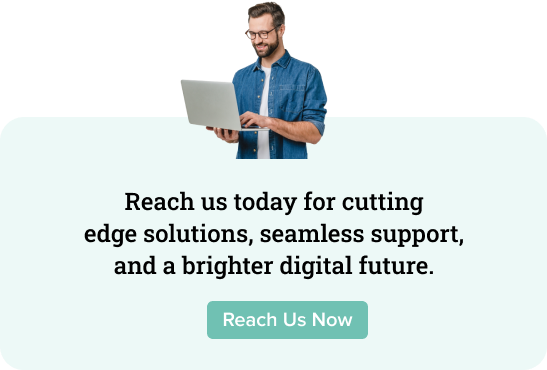
Today, millions of people worldwide spend countless hours online browsing, making money, spending money, meeting new people, getting degrees, watching movies, listening to music, and this list goes on. As a result, web, desktop, and mobile applications are becoming a necessary component of our daily lives. People’s lives are made more accessible by the Internet by making it easier to access and search for applications that meet their needs.
Up to 97% of Americans now use a mobile device, with 85% of those using smartphones. Over 400 million websites and online applications are currently in use (out of a total of 2 billion), and over 8.9 million mobile applications are available.
Consumers now have high expectations for their online transactions with brands due to all this time and experience, and web apps must live up to these expectations. Across all of their online experiences, users want performance, personalization, flexibility, security, and scalability.
Web app development allows web-based projects to function and behave like mobile apps. Web apps prioritize responsive interactions with users while still delivering content through a network and the Internet. The development of web apps is the continuation of web development. Web app development is, by definition, more dynamic than what traditional web development can offer, despite the similarities between the two.
In order to better comprehend the web application development process’ benefits, essential tools, and frameworks, we will examine it in more detail in today’s blog post. Go on reading!
What is Web Application Development?
Building a web application involves a process called web application development. Standard engineering procedures are less of a priority than engaging with the browser. Typically, developing a web application entails describing the issue, prototyping a solution, consulting users, selecting a framework or tool, and then creating and testing the web application—often iteratively with users.
Users in today’s technology environment have high expectations for their online experiences and are looking for seamless and satisfying ones. An excellent custom-built web app has the qualities that are described by the following adjectives:
- Fast
- Secure
- Easy to maintain
- Aesthetically appealing
- Intuitive
- Reliable
- Accessible
Although creating a web application is a large decision that needs the assistance of a reliable partner, it has enormous possibilities. Therefore, working with a development company that can traverse the current technical world while keeping your business goals at the forefront is crucial.
Said app development process is the hipper younger sibling of traditional web app development.
Developing, creating, testing, and delivering online applications is known as web application development. Instead of focusing on conventional software engineering procedures, it is primarily concerned with how people interact with web browsers. Moreover, to build appealing solutions, entrepreneurs are advised to refer to the latest trends and technologies as it connects them with emerging tools and technologies.
People often mix “web application” with “website,” but these are two separate terms. So let’s clear this dubiety in our next section.
How is a Web Application Different From a Website?
A web application is a piece of software with dynamic content and more complicated user interactions, whereas a website is a collection of pages that typically displays static content.
You can access APIs or initiate operations from other software services in a web application. In addition, you can visit webpages and apps using your web browser (such as Chrome, Firefox, Microsoft Edge, Safari, etc.).
- Examples of websites with web applications include Facebook, Twitter, Gmail, and Amazon.com.
- Examples of websites: Landing pages for corporate branding, local enterprises, or traditional blogs.
However, many websites’ landing pages are connected to web apps. Still unable to grasp? Don’t worry; the below table will help you better understand the difference.
| Web Application | Website |
|---|---|
| Interactive and designed to be dynamic | Static content |
| An interactive online application responds to user input | A website only transmits information and does not allow user interaction |
| Web apps usually demand authentication | No authentication required |
| Comes with high and complicated features | Website functions are relatively easy |
| The web app to be pre-compiled before deployment | It’s not necessary to pre-assemble a website |
| Challenging process | Website integration with other software is easy |
Primary Steps to Developing Web Applications
There are many different processes involved with developing a web application. Below, we have summarized the different steps involved with the development process. Here we go.
Validate Your App Idea
Understanding your concept for your web application is the first stage. Every app concept starts with a solution to an issue your potential users may be experiencing.
The concept need not be brilliant but must address peoples’ problems. You need to validate your idea before you start the development. Verify that the proposed solution actually addresses the issues raised by the clients. You ought to consider your clients’ viewpoints.
Take Netflix as an example of how it solves customer pain problems.
Netflix addresses the issue of bringing the entertainment industry to your home or personal devices so you may stream it from anywhere at any time and avoid the hassle and expense of traveling to the theaters.
Market Research
Market Research is the most vital first step for any product. The team must have a thorough awareness of the user, the user problem, the problem’s scope (how many people are affected by it), and the competition for various solutions to the problem.
Understanding the user and the competition during the market research phase will help guide the technical development of the web app.
Plan the Workflow
A workflow can create a method for organizing your web application development’s numerous components in a logical way. Consider the components of your web app and how you might use your resources and money to meet those needs.
Because you are developing software, your workflow needs to be both business- and technology-focused.
Adjust accordingly depending on when you want your web app development to be finished. Make algorithms that will carefully advance your progress.
Work on Features and Functionalities of the Web App
Speed is vital in today’s fast-paced market, but so is creating the appropriate product. So what does the web app accomplish at this point? is the most fundamental question we wish to ask.
Using the MoSCoW method, make a list of all the features you want for the web app, both large and minor, and prioritize them according to their importance:
- Mo – Must have features
- S – Should have features
- Co – Could have features
- W- Won’t need features
These features will be utilized in subsequent planning, web app’s wireframing and prototyping, and ultimately the minimal viable product (MVP), a lean product with the essential features and functionality to help the product reach early users.
Crate Initial Prototypes
Finally, it’s time to start some coding.
In the early stages of development, basic prototypes are made and put to the test with actual target users.
In the first step, analysts and designers often refine the UX following graphic design principles while concentrating primarily on aspects of a web application that are important to end users. Then, a representative user group is shown in this wireframe. The product is later polished and improved based on their initial input until they are happy.
This agile development method delivers a new product with just the essential functionality needed to attract early adopters.
Developing and Testing Your Web App
Once the design is complete, it’s time to build and test your app to gather useful feedback.
Before you start building the MVP online application, choose a web application framework to ensure smooth operation.
The testing phase is the next step when developers will employ various testing techniques based on the features and functionalities of your web application. Once your web project’s development and testing phases have been completed successfully, you can then release an MVP version.
What’s the Average Web App Development Cost?
Web-based mobile applications are always preferred when it comes to developing mobile apps. Mobile apps are currently seeing a huge surge due to rising demand for them and technological advancements.
Without understanding the precise requirements, it can be difficult to forecast how much a web app development will cost. The cost of web applications depends on a variety of factors, including
- Features and customization
- Geographic location
- Technology
- Developer’s team
- Experience
- Technology stack
Understanding the short- and long-term goals is essential before choosing the designs for your web app.
- If you require customization, having a strong understanding of your demands is also essential.
- The use of mockups by developers, which could include paying a subscription fee for themes and plugins, would be another instance of hidden charges.
If you want to avoid such additional costs for plugins at the project’s conclusion, be sure you are hiring skilled developers who comprehend your project objectives well.
Bottom Line
Web apps are a fundamental instrument for greater growth in their market share because the Internet is a given for most modern organizations. With a creative and interesting web application, you can find the secret to getting your business in front of the ideal customers online. When it comes to achieving corporate objectives and making money, web applications are far more significant than official websites.
Want to offer your business an advantage over rival businesses with user-centric web applications? Consider Elluminati Inc for web application development that will allow you to get the product that meets your customer’s expectations while representing your brand’s identity.













